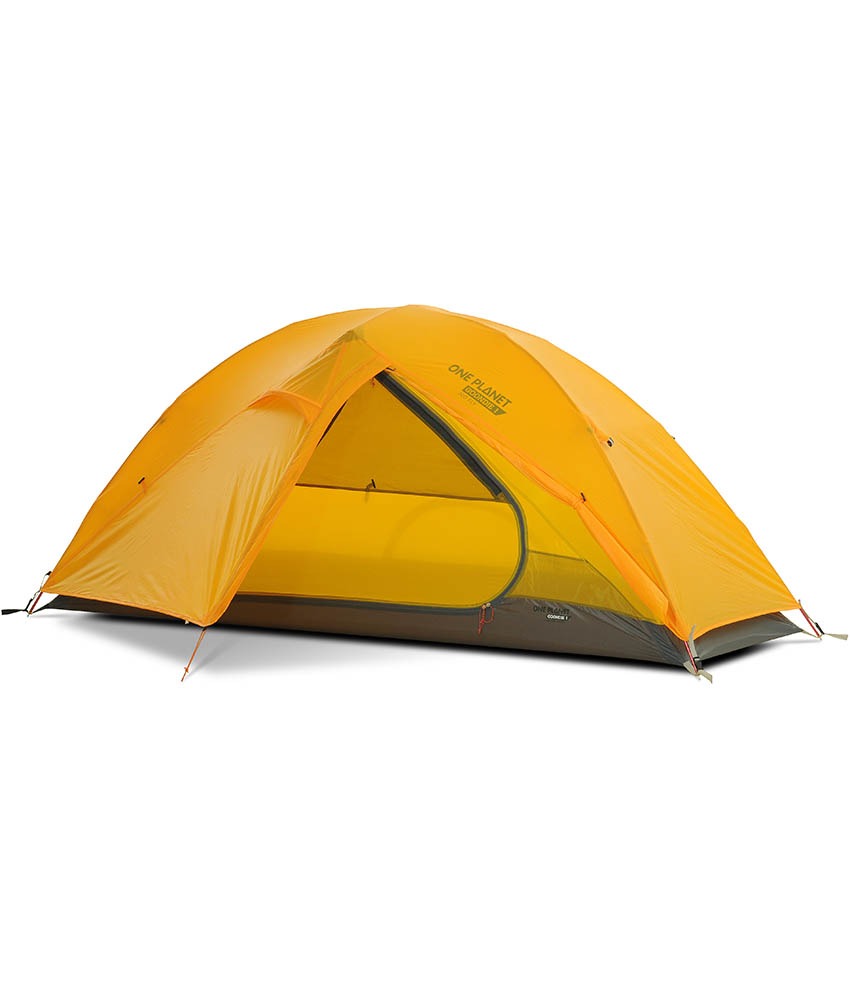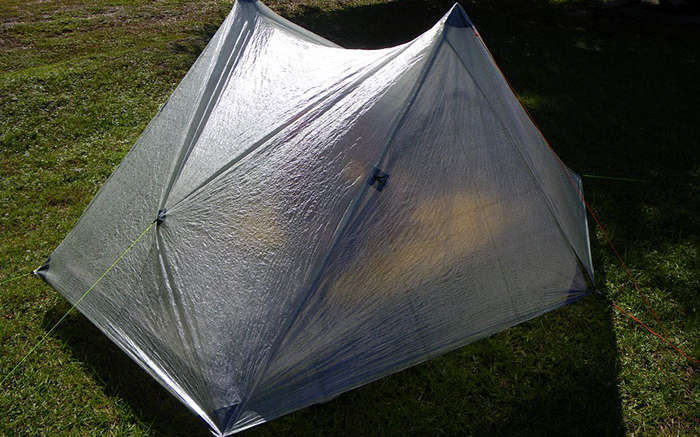Tents have been in use for thousands of years. For example the Asian Yurt which is made from animal hides or felt has been in use for over 3,000 years. The Romans used leather tents during their military campaigns. More recently tents were constructed using canvas or cotton. These building materials while being heavy are also comfortable. You do not need to worry about condensation and they provide a measure of insulation. These tents are still in use today and many people prefer using them to synthetic tents.

What is the best tent material? Cotton or Canvas tents are the best for comfort. For campers who need mobility some of the most commonly used materials are either polyester or nylon. These building materials have the advantage of being lightweight and packable. They are also tough and require less maintenance than cotton or canvas tents.
Polyester has the advantage of being less given to stretching, and more water-resistant while nylon is tougher and more lightweight. The downside of using these fabrics is the fact that they do not provide very much insulation. So in hotter climates particularly if the sun’s rays are directly on the tent it can get quite hot and stuffy. In colder climates the interior of the tent only provides minimal insulation against the cold. This situation is of course rectified if you spend most of your time outside when it is hot, and utilize quality sleeping bags when it is cold.
The other downside of using polyester or nylon is that the fabric doesn’t breathe very well. So condensation can easily build up inside the tent. This problem has been remedied to an extent by using a flysheet or rainfly to go over the inner tent. This rainfly is designed to capture the condensation and wick it away from the inside of the tent. It should not come into any contact with the inner tent.
The inner tent is usually made of breathable fabric such as mesh. This mesh allows condensation from breathing to escape but does not allow any mosquitoes or bugs to enter the tent. It is important to spend the money and purchase a tent with a fine mesh. There are some situations where sand flies or noseeums will only be blocked with this fine mesh. Otherwise you will have the unpleasant experience of being bitten all night long.
Tent Coatings
There are various coatings that one can use to maintain the waterproofness of your tent. A very common coating used on tents is polyurethane. It is fairly long-lasting and is the least expensive. Another kind of coating is silicone which is used to waterproof nylon. This is applied when a thin woven fabric is impregnated by liquid silicone from both sides. The silicone adds to the strength of the fabric and makes it waterproof. This technology is usually used in more expensive tents. It is highly resistant to UV light. Sometimes silicone is used on the exterior surface and polyurethane is used to coat the interior of the tent. This lowers the cost but adds weight to the tent. The upside of this is the inside seams become easier to repair by applying seam tape.
Gore-tex is a well know fabric that is used in tents. Unlike the other fabrics just mentioned Gore-tex has the advantage of being breathable. It is also extremely tough and durable. It is used frequently by professionals in all-season tents and the price tag reflects this.

Another fiber that is the most expensive of all the fibers is Cuban Fibre. It is a non-woven fabric that sandwiches Dyneema Fibres between two layers of composite laminate material. It is 15 times stronger than steel. The resulting fiber is strong, tear-resistant, and waterproof. It is 15 times lighter than the next lightest material SilNylon.
Tent Waterproofing Sprays and Sealants
To keep the rain out of most tents, you must periodically waterproof it. Most tents come with a seam sealer already applied. However this can gradually wear and must be reapplied. To do this you must set up your tent in a dry, sunny spot so you can easily take a close look at all the seams. You will need to apply the sealant on the underside of the fly and inner side of the tent body. If you find any seam tape that is coming off, gently remove it. Leave any intact portions in place. Prep the seams by cleaning the seams with rubbing alcohol. Then apply the seam sealer to the seams. If you notice that much of the seals are failing it may be good to apply the sealer to all the seams.
You can also refresh the urethane coating. This is the coating on the inside of your rainfly and floor that keeps out moisture. You will then need to purchase the correct sealant for your tent. There is silicone-treated fabric and polyurethane-coated fabric. Most tents use polyurethane-coated fabrics but if your unsure check with the manufacturer.
To apply the sealant you will need to lay your tent out and scrub off any flaking coating with rubbing alcohol and a sponge. You can apply a thin coating of the new sealant to the entire fly or tent floor. Let the tent dry for the correct amount of time which is usually 24 hours or so.
If you notice that your tent fly is no longer effectively repelling water you can apply a waterproofing spray. One effective spray is Nikwax Tent Spray or Atsko Silicone Water-Guard. Follow the directions on the bottle and leave to dry.
So the best tent material for you depends upon what you’re using it for, how much maintenance you want to do, what your personal preferences are, and of course your budget. Thinking about all these factors can help you narrow down which tent is best for you. Pitching your tent in your backyard or pitching in the Himalayas will greatly determine what your final choice and price will be.
